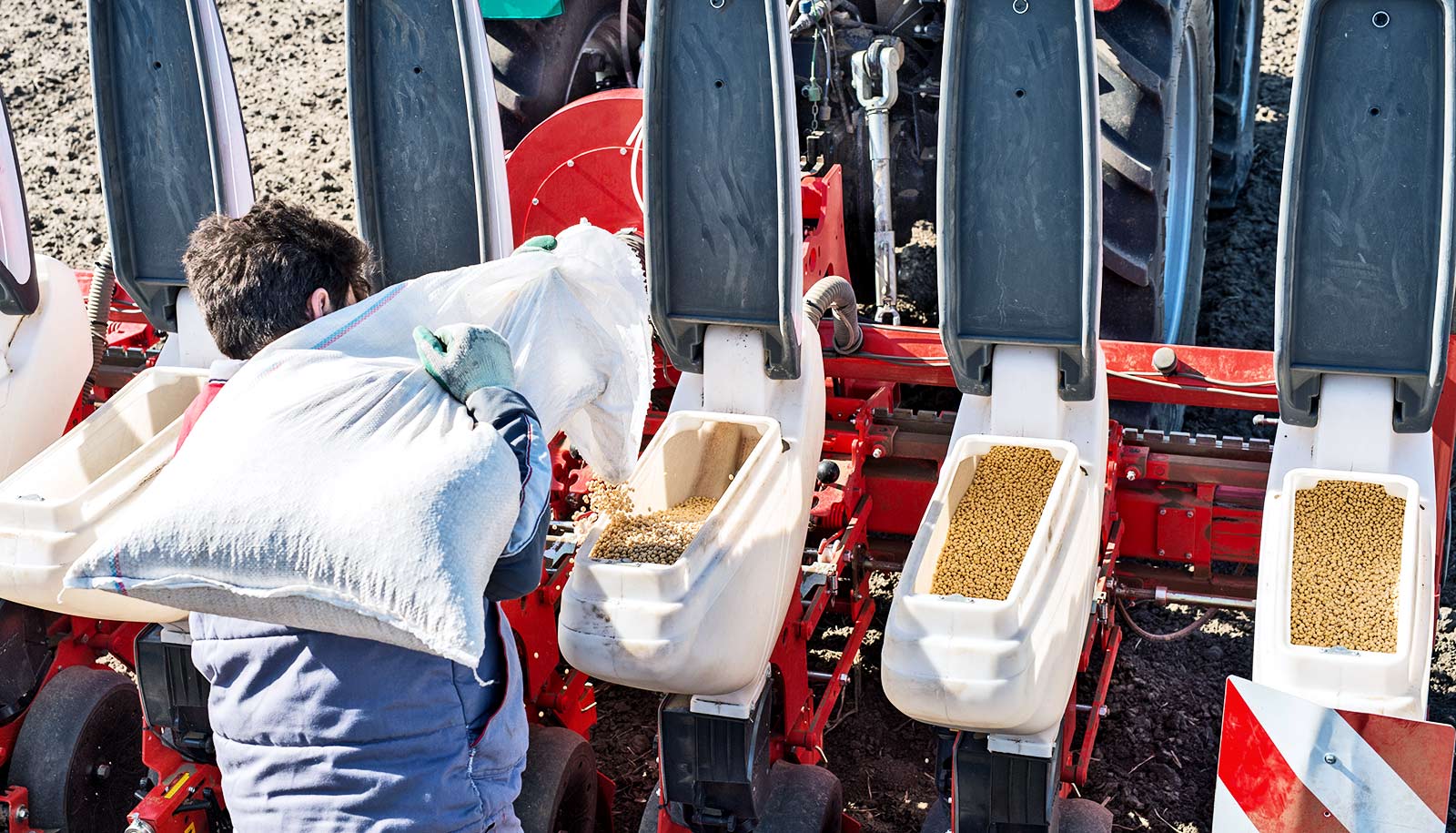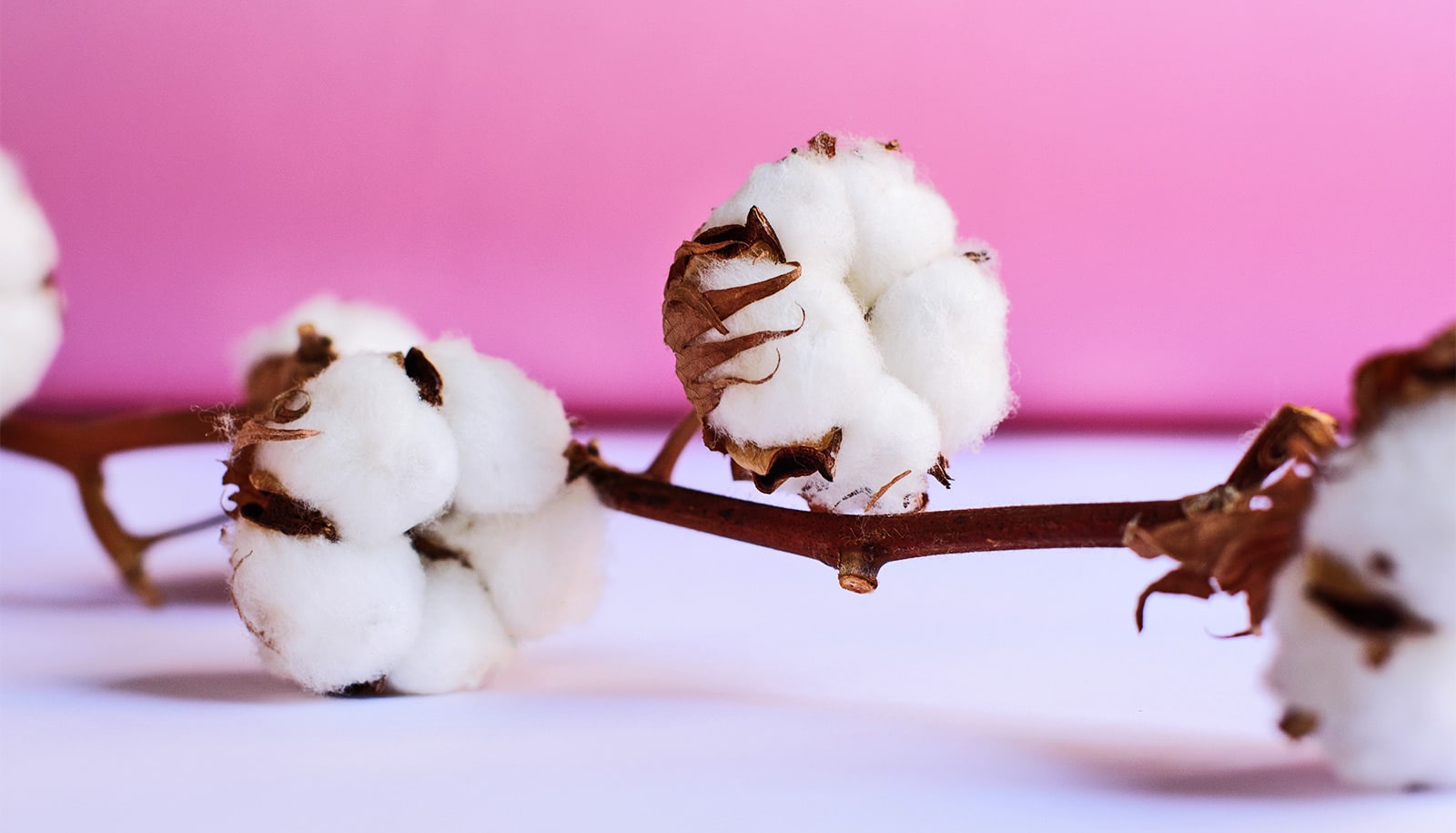A new computational model could help farmers and seedmakers take the guesswork out of what to plant each year.
It’s simple enough that a farmer could receive a recommendation containing the five best seed types to grow given the average yields, weather conditions, and soil composition of his or her region—ranked in order of simulated success rates.
The program, dubbed SimSoy, uses tools as simple as a laptop, algorithms, and decision-making frameworks.
“This could be done for any farm, and a wide variety of crops,” says Durai Sundaramoorthi, senior lecturer in management at the Olin Business School at Washington University in St. Louis. “You could do it for corn. You could do it for peanuts.”
“Today, farmers are inundated with seed choices for annual planting—they must choose from hundreds of types which have been optimized by the seed companies for a variety of outcomes. For example, one seed might be very good for early planting but not as high yielding if rain delays planting. Others offer improved yield with certain insect pressures,” says Richard J. Mahoney, former CEO of Monsanto and a distinguished executive-in-residence at Olin.
“The method… allows the farmers to make tradeoffs based on best judgment of planting conditions, their risk/reward appetite, and many other choices with a user-friendly model.”
Mahoney says while the method is an innovation for farmers, it could be used in retail and medical applications, allowing quantifiable tradeoffs among product offerings.
Big data for farmers
“Significant progress has been made in agricultural science in developing seed varieties with genetic traits desirable in different planting environments, and the yield performance of those seed varieties in many test fields are documented in large datasets,” says Lingxiu Dong, professor of operations and manufacturing management and coauthor of the working paper.
“We are intrigued by the opportunity to help farmers around the world, who often have limited access to, and the knowledge of, processing the big data. This way, we can make the best use of what agricultural science offers.”
Sundaramoorthi, who previously optimized the assignments of nurses for a north Texas hospital, and Dong launched the new study with several PhD students by leveraging big data and predictive models around 182 different varieties of soybean seeds.
Using 2008-14 big data from Syngenta, a biotechnology company that produces seeds and agrochemicals, the researchers were able to plug in seed, weather, and soil/farm data in a swath of the Midwest that stretched from western Ontario, Canada through Michigan, Indiana, Illinois, Wisconsin, and into South Dakota and Nebraska.
That gave the researchers tens of thousands of data points, which, when multiplied by the 182 seed varieties and the 1,000 simulations of weather predictions at each target site, produced what seemed to measure a metric ton of information on yield and risk of varieties.
“Weather—that’s the variable, that’s the challenge,” Sundaramoorthi says.
“The machine-learning-based simulation allows us to make predictions of how each of the 182 seed varieties would perform under various weather conditions in a target farm—the place where those seeds have not been grown before,” Dong says.
Seed portfolio
The researchers used descriptive analytics (such as distribution), predictive analytics (machine learning models, kernel density estimation, kernel choice), and prescriptive analytics (yield simulations and portfolio optimizations). The machine-learning models make the predictions.
Leaf sensors tell farmers when plants get thirsty
The simulation uses the machine-learning predictions, and the optimization component of the framework takes risk into account based on the simulations. But that’s the difficult, computational work resulting in the web application, which then makes it an easy process from there.
In the end, the researchers were able to boil down the tool to essentially a 27-question form that includes: latitude, longitude, area, soybean varieties, irrigation, soil types and depths, acreage, and yields, among other things. SimSoy then basically spits out a five-line answer, for each variety that its analytics predict for each farmer.
“You do a portfolio optimization just like in finance,” Sundaramoorthi says. “Here, the soybean varieties are like different stocks. Financial portfolios are deeply researched so you can get more for every dollar.” If the investor doesn’t lessen risk and improve yield, “that’s money left on the table.”
They also surveyed a group of Illinois and Iowa farmers, which showed that the farmers want to plant several varieties based on historical data, Sundaramoorthi says.
“The reason they want to plant several varieties is they want to spread the risk, so they aren’t relying on just one soybean,” he says. “Their concerns are very similar to what we want to solve.
Why farmers may want to keep, not kill, weeds
“But the biggest difference is, they’re using intuition and some simple rules to solve their issues—they might choose one variety that has done well for them before, and use it on 50 percent of their farm, and two other varieties on 25 percent each.
“Whereas, we are using analytics telling us what should be the right proportion of these different varieties.”



